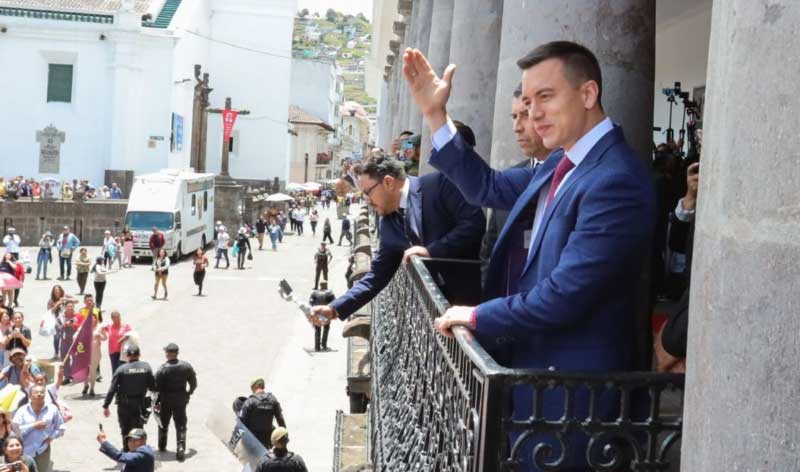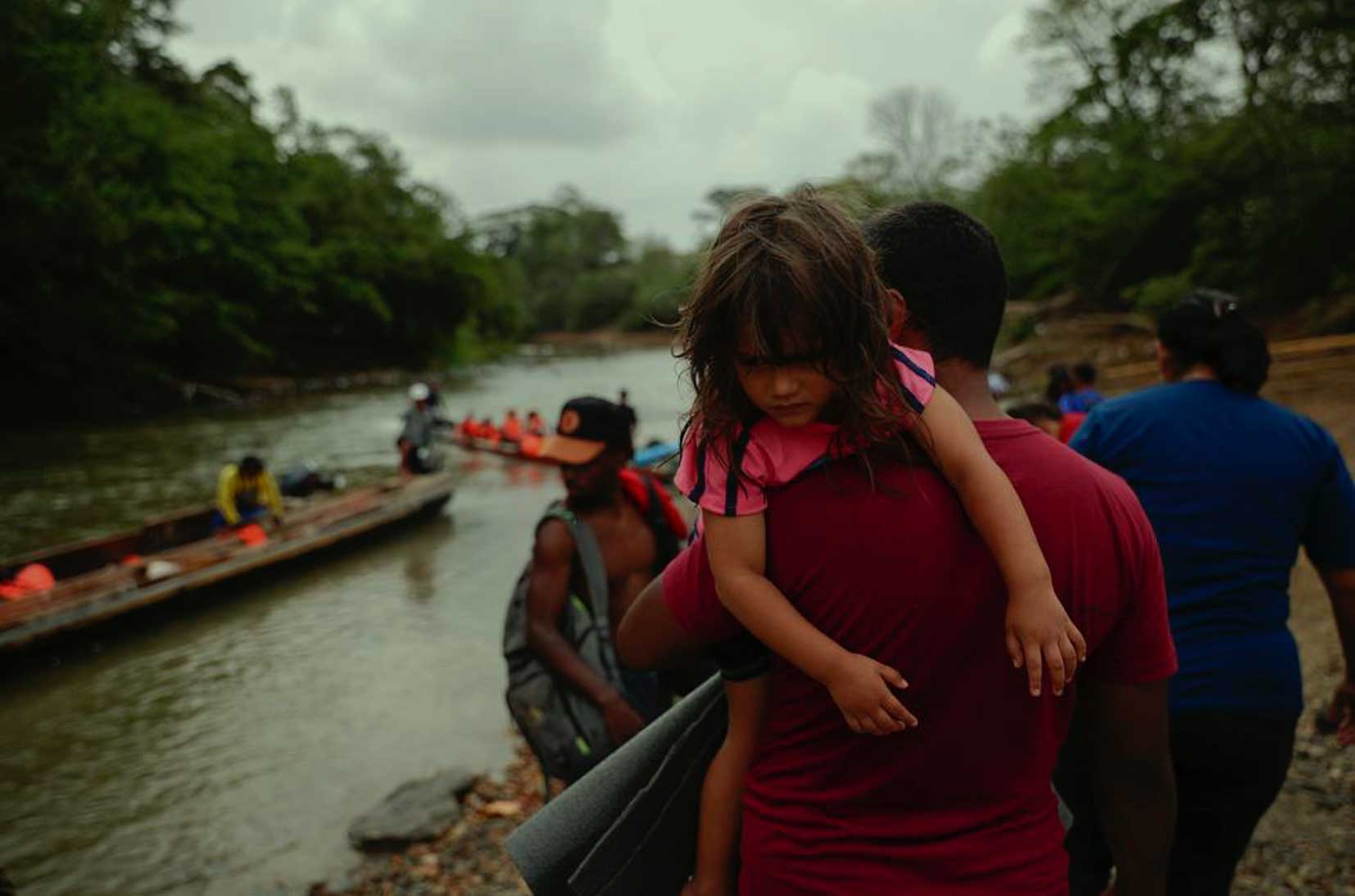Chaki Wasi handicrafts center promotes indigenous architecture and tourism at Quilotoa crater

The indigenous town of Shalalá, on the volcanic crater of Quilotoa, is working to promote sustainable tourism.
By Kat Barandy
Along the volcanic crater of Quilotoa Lagoon in Ecuador, the indigenous town of Shalalá is working to promote sustainable tourism. Here, nature is celebrated, a philosophy shown through the community’s commitment to living in symbiosis with the environment — this extends to its architectural endeavors. A new project for the town, known as the Chaki Wasi handicrafts center, has been designed by architecture studio La Cabina De La Curiosidad to exemplify the spirit of the place and its cultural heritage.
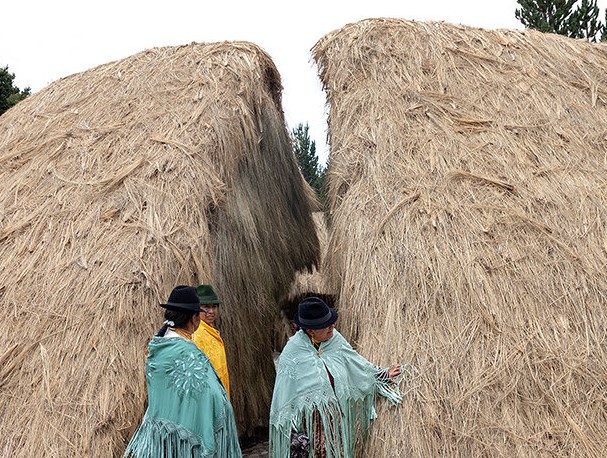
The community’s new handicrafts center, Chaki Wasi, reflects its cultural heritage.
Chaki Wasi, meaning to ‘house made of straw from floor to roof‘ in Kichwa, embodies the center’s core principle: representing Andean culture through traditional building techniques. The architects at La Cabina De La Curiosidad favored vernacular methods to create a timber and fiber structure that resonates with the past while catering to the present needs of the Shalalá community.
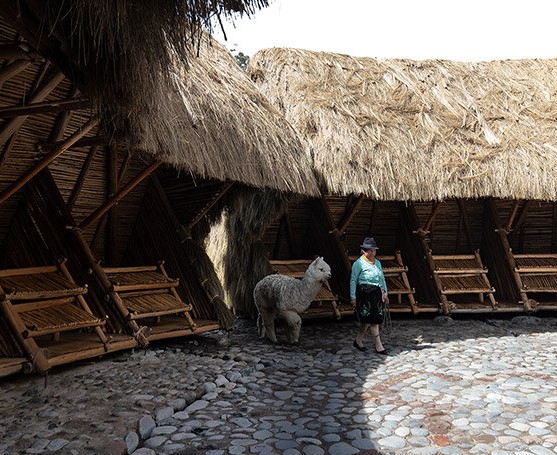
Local materials and traditional techniques were used in the construction.
The foundation of Shalalá’s Chaki Wasi rests firmly on river stones, which symbolize the resilience of the land, as noted by the architects at La Cabina De La Curiosidad. Eucalyptus wood forms the skeleton, bound together with cabuya, a natural fiber derived from the penco plant. Large chaklla dowels, crafted from young eucalyptus, provide additional support.
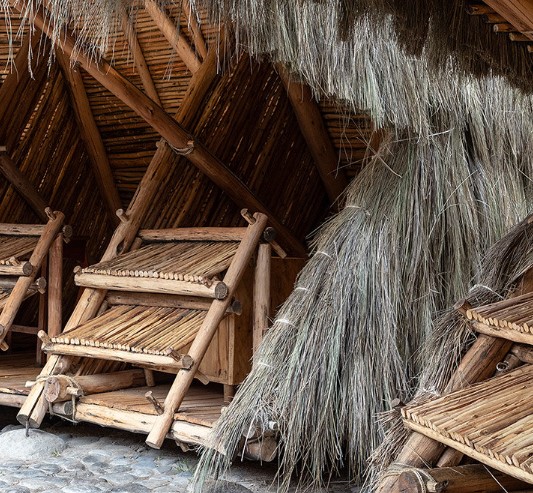
Community members played a vital role in the construction process.
The construction relied solely on traditional tools — wooden mallets replaced nails, and repeated sequences of chakllas secured the joints. The entire structure is topped by an expansive thatched roof, which wraps the center protective and textural envelope.
This commitment to sustainable construction goes beyond using local materials. The project champions the concept of regenerative design. Waste is returned to the land, promoting a closed-loop system in harmony with nature.
By embracing these principles, the Shalalá community ensures a positive carbon footprint, leaving a legacy for future generations.
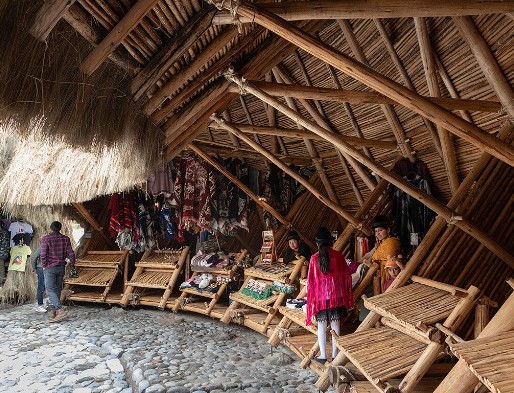
The inside of the structure is used for crafts sales.
The story behind Chaki Wasi’s construction is as remarkable as the building itself, as it was assembled through a partnership between La Cabina De La Curiosidad and the community itself.
The project thrives on a strong sense of community, as leadership roles rotated weekly to lend a sense of shared ownership. Mingas, traditional communal work parties, brought together women, men, and young people. Wood and straw were procured through collaboration with neighboring communities, solidifying the social fabric of the region.
The entire structure was built by hand, relying on simple tools and collective strength. Ropes and a spirit of unity were instrumental in raising the structural modules. The laying of the thatch became a celebration of ancestral knowledge, each stage marked by rituals and customs that honor the Andean way of life.
________________
Credit: Design Boom













